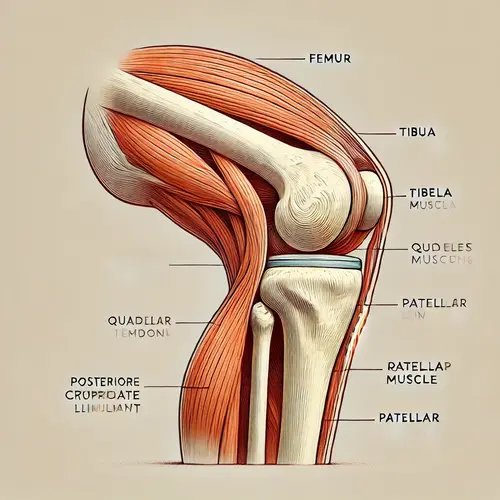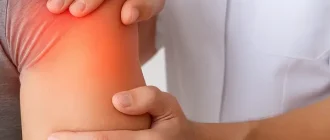Your knees are silent heroes, supporting you through daily activities like walking, climbing stairs, or even standing up from a chair. But what happens when stiffness sets in, making bending your knee a struggle? It’s a situation many face, and it can feel like your knee has turned to stone.
Case Study: Amy’s Struggle with Morning Stiffness
Amy, a 42-year-old teacher, woke up one morning and noticed she couldn’t bend her left knee as easily as before. “I had no idea what caused it,” she recalls. “It wasn’t painful, just stiff, and getting dressed was suddenly a challenge.” After weeks of stiffness, she consulted a specialist who identified early signs of osteoarthritis—a common cause of knee stiffness.
Common Causes of Knee Stiffness
Knee stiffness can be triggered by a range of issues. Let’s break down the most common reasons:
| Condition | Description |
|---|---|
| Osteoarthritis | Gradual wear and tear on the knee cartilage, leading to stiffness and reduced mobility. |
| Rheumatoid Arthritis | An autoimmune disease that inflames the knee joints, causing pain and stiffness. |
| Injury | Ligament or tendon damage can result in swelling, limiting knee movement. |
| Post-Surgical Stiffness | After knee surgery, scar tissue can form, reducing flexibility. |
| Meniscus Tear | Tears in the cartilage of the knee, often caused by sudden twists or trauma, make bending difficult. |
Each condition affects the knee differently, but all lead to one common outcome: bending the knee becomes uncomfortable or nearly impossible.
When Bending Hurts: Real Stories from Real People
The Athlete’s Return: Marcus and His ACL Recovery
Marcus, a 29-year-old runner, tore his ACL during a basketball game. Post-surgery, the challenge was not only healing but regaining mobility. “At first, it felt like my knee wouldn’t bend at all. Physical therapy was brutal, but after weeks of steady effort, I got back to 90% flexibility.”
The Office Worker’s Surprise: Sarah’s Meniscus Tear
Sarah, a 35-year-old accountant, never thought she would have a knee issue. But after slipping in the office bathroom, she experienced immediate stiffness. The diagnosis? A meniscus tear. “I didn’t think it would happen to me—I don’t even play sports!” Her recovery involved both surgery and ongoing exercises to regain her knee’s range of motion.
What Makes Bending Difficult?
Bending the knee relies on a delicate interplay of muscles, tendons, and ligaments. When something disrupts that system—whether it’s an injury, inflammation, or age-related changes—the range of motion suffers. Let’s look at the knee mechanics in more detail:
Flexion and Extension: The Basics
The knee is a hinge joint, allowing two primary movements:
- Flexion: Bending the knee, bringing your heel toward your buttock.
- Extension: Straightening the knee, moving it back to a neutral position.
Muscles like the quadriceps and hamstrings work together to facilitate these movements. However, when stiffness sets in, it often indicates that one or more of these elements isn’t functioning properly.
Factors That Reduce Flexibility
- Swelling: Inflammation within the knee joint limits bending capacity.
- Muscle Tightness: Stiff muscles, especially the hamstrings, can prevent the knee from fully bending.
- Scar Tissue: After injury or surgery, scar tissue can develop, hindering smooth knee movement.
Real Solutions for Real Stiffness
Physical Therapy: The Cornerstone of Recovery
Whether it’s due to surgery, arthritis, or injury, physical therapy remains the gold standard for improving knee flexibility. A customized plan that includes stretching, strengthening, and mobilization can significantly reduce stiffness.
Practical Tip: Try the Heel Slide
One simple exercise often recommended by physical therapists is the heel slide. While lying on your back, gently slide your heel toward your buttock, bending the knee as much as possible. This exercise helps maintain and improve knee flexibility.
Medications and Injections
For arthritis sufferers, medications like nonsteroidal anti-inflammatory drugs (NSAIDs) can reduce swelling and pain. In more severe cases, injections of corticosteroids or hyaluronic acid can provide relief by lubricating the joint or reducing inflammation.
When to Seek Help: Red Flags for Stiff Knees
It’s crucial to know when home remedies aren’t enough. If you experience any of the following symptoms alongside knee stiffness, a doctor’s visit is necessary:
- Sudden inability to bear weight on the knee.
- Severe swelling or bruising.
- Locking of the knee, where it cannot fully straighten or bend.
Early intervention can prevent more serious issues down the line, including permanent loss of mobility.
Conclusion: Navigating Knee Stiffness with Confidence
Dealing with knee stiffness and difficulty in bending doesn’t have to be a lifelong struggle. With a mix of the right treatments, exercises, and early intervention, many individuals regain their full range of motion—or at least enough to continue their daily lives without major limitations.
So, whether you’re an athlete recovering from an injury, a desk worker dealing with a surprise tear, or someone managing arthritis, remember: every stiff knee has a story, but every story has a solution.
Takeaway
Knee stiffness can stem from many causes, but understanding the problem and taking proactive steps can significantly improve your quality of life. Don’t let a stiff knee hold you back—seek the right treatments and take control of your knee health!
About the Author
Reyus Mammadli is the author of this health blog since 2008. With a background in medical and biotechnical devices, he has over 15 years of experience working with medical literature and expert guidelines from WHO, CDC, Mayo Clinic, and others. His goal is to present clear, accurate health information for everyday readers — not as a substitute for medical advice.







